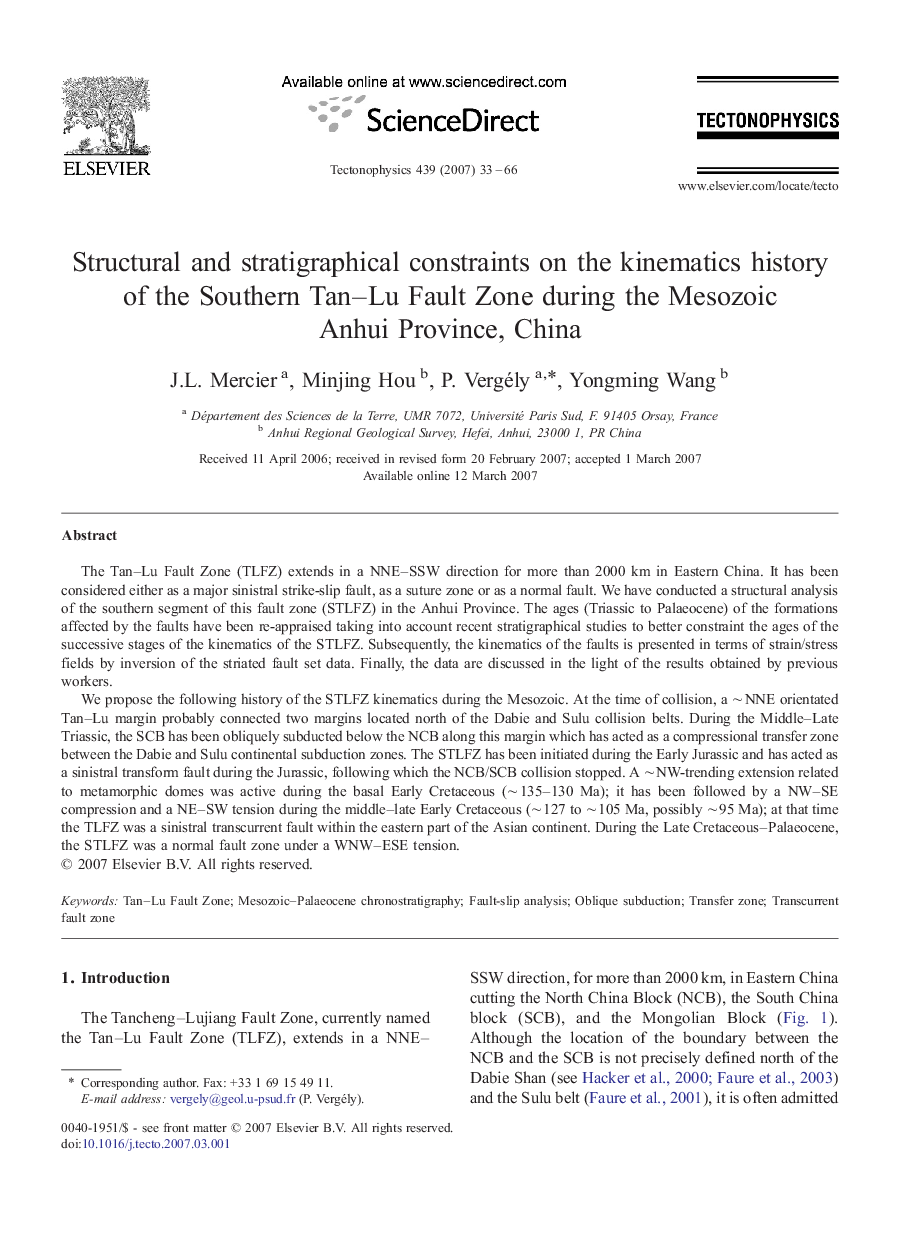| کد مقاله | کد نشریه | سال انتشار | مقاله انگلیسی | نسخه تمام متن |
|---|---|---|---|---|
| 4694719 | 1636930 | 2007 | 34 صفحه PDF | دانلود رایگان |

The Tan–Lu Fault Zone (TLFZ) extends in a NNE–SSW direction for more than 2000 km in Eastern China. It has been considered either as a major sinistral strike-slip fault, as a suture zone or as a normal fault. We have conducted a structural analysis of the southern segment of this fault zone (STLFZ) in the Anhui Province. The ages (Triassic to Palaeocene) of the formations affected by the faults have been re-appraised taking into account recent stratigraphical studies to better constraint the ages of the successive stages of the kinematics of the STLFZ. Subsequently, the kinematics of the faults is presented in terms of strain/stress fields by inversion of the striated fault set data. Finally, the data are discussed in the light of the results obtained by previous workers.We propose the following history of the STLFZ kinematics during the Mesozoic. At the time of collision, a ∼ NNE orientated Tan–Lu margin probably connected two margins located north of the Dabie and Sulu collision belts. During the Middle–Late Triassic, the SCB has been obliquely subducted below the NCB along this margin which has acted as a compressional transfer zone between the Dabie and Sulu continental subduction zones. The STLFZ has been initiated during the Early Jurassic and has acted as a sinistral transform fault during the Jurassic, following which the NCB/SCB collision stopped. A ∼ NW-trending extension related to metamorphic domes was active during the basal Early Cretaceous (∼ 135–130 Ma); it has been followed by a NW–SE compression and a NE–SW tension during the middle–late Early Cretaceous (∼ 127 to ∼ 105 Ma, possibly ∼ 95 Ma); at that time the TLFZ was a sinistral transcurrent fault within the eastern part of the Asian continent. During the Late Cretaceous–Palaeocene, the STLFZ was a normal fault zone under a WNW–ESE tension.
Journal: Tectonophysics - Volume 439, Issues 1–4, 20 July 2007, Pages 33–66